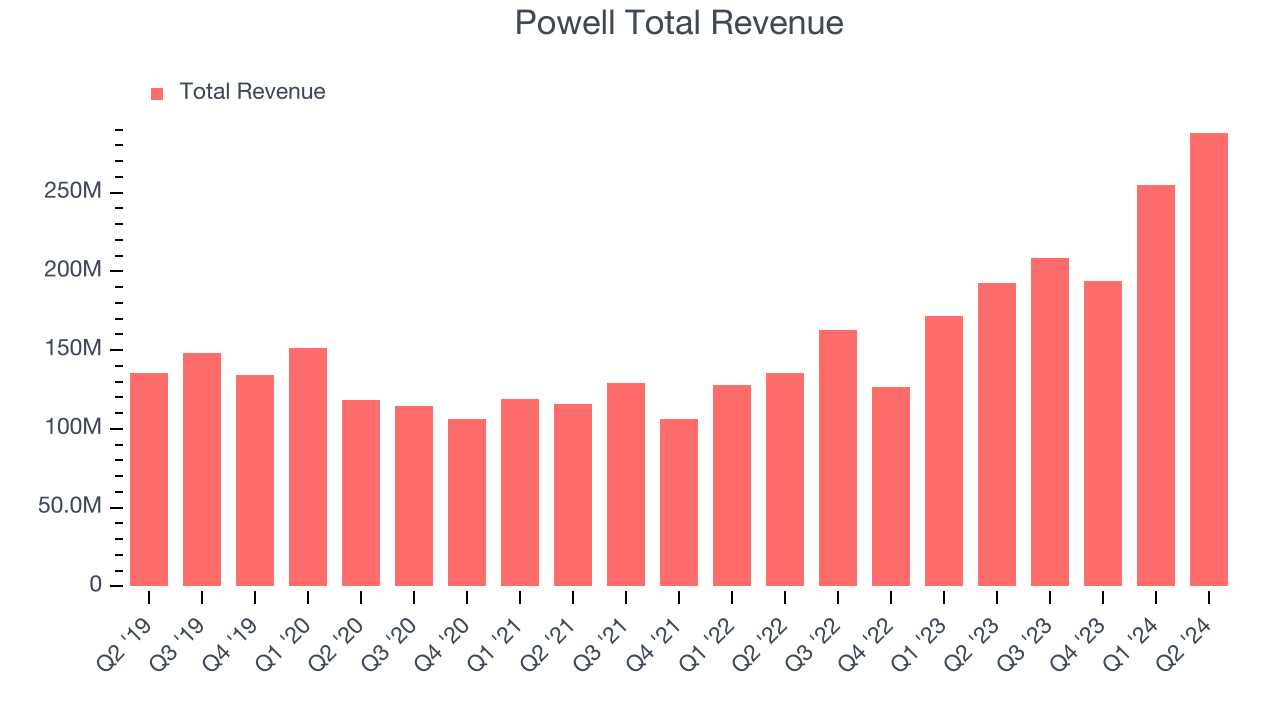
Electrical energy control systems manufacturer Powell (NYSE: POWL) will be reporting results tomorrow after market hours. Here’s what to look for.
Powell beat analysts’ revenue expectations by 29.7% last quarter, reporting revenues of $288.2 million, up 49.8% year on year. It was an incredible quarter for the company, with a solid beat of analysts’ EPS and EBITDA estimates.
Is Powell a buy or sell going into earnings? Read our full analysis here, it’s free.
This quarter, analysts are expecting Powell’s revenue to grow 37.3% year on year to $286.5 million, improving from the 28.3% increase it recorded in the same quarter last year. Adjusted earnings are expected to come in at $3.55 per share.

The majority of analysts covering the company have reconfirmed their estimates over the last 30 days, suggesting they anticipate the business to stay the course heading into earnings. Powell has a history of exceeding Wall Street’s expectations, beating revenue estimates every single time over the past two years by 15.3% on average.
Looking at Powell’s peers in the electrical systems segment, some have already reported their Q3 results, giving us a hint as to what we can expect. OSI Systems delivered year-on-year revenue growth of 23.2%, beating analysts’ expectations by 8%, and Vertiv reported revenues up 19%, topping estimates by 4.8%. OSI Systems traded down 5.5% following the results while Vertiv was also down 2.2%.
Read our full analysis of OSI Systems’s results here and Vertiv’s results here.
There has been positive sentiment among investors in the electrical systems segment, with share prices up 2.7% on average over the last month. Powell is up 1.1% during the same time and is heading into earnings with an average analyst price target of $194.60 (compared to the current share price of $283).
Unless you’ve been living under a rock, it should be obvious by now that generative AI is going to have a huge impact on how large corporations do business. While Nvidia and AMD are trading close to all-time highs, we prefer a lesser-known (but still profitable) semiconductor stock benefitting from the rise of AI. Click here to access our free report on our favorite semiconductor growth story.





